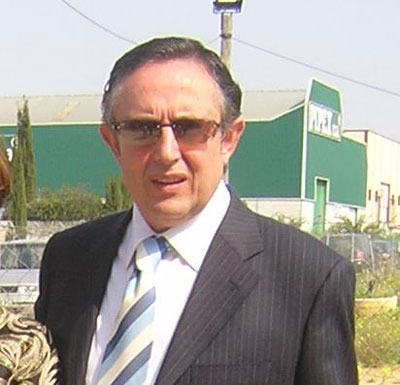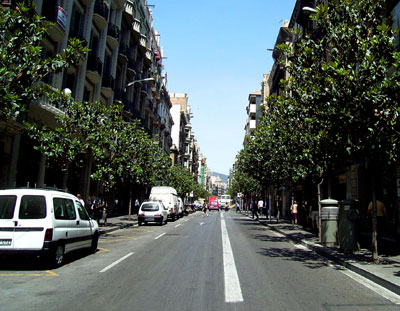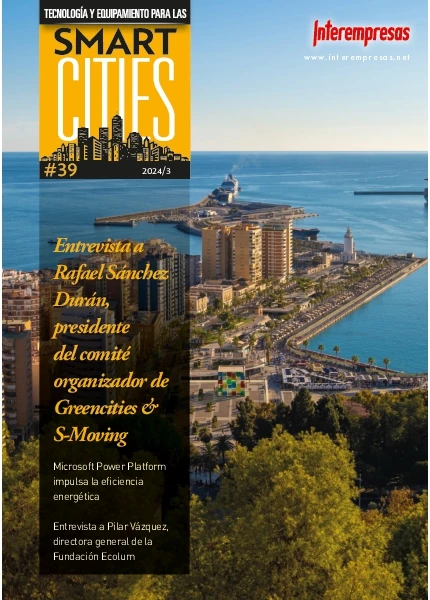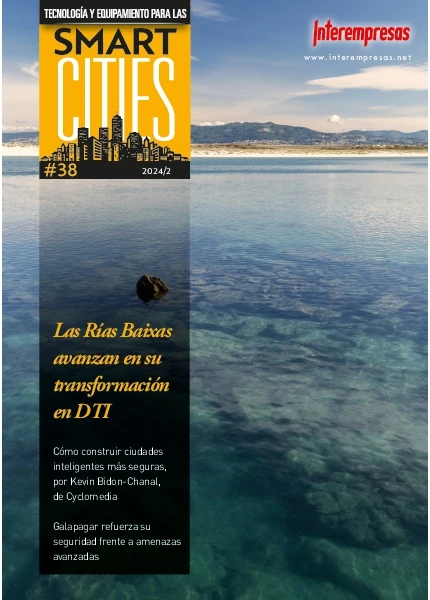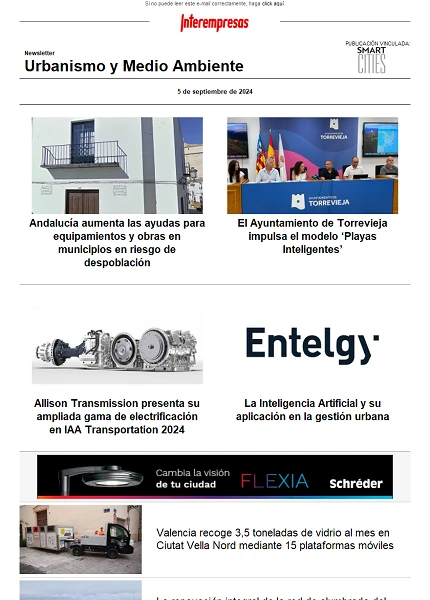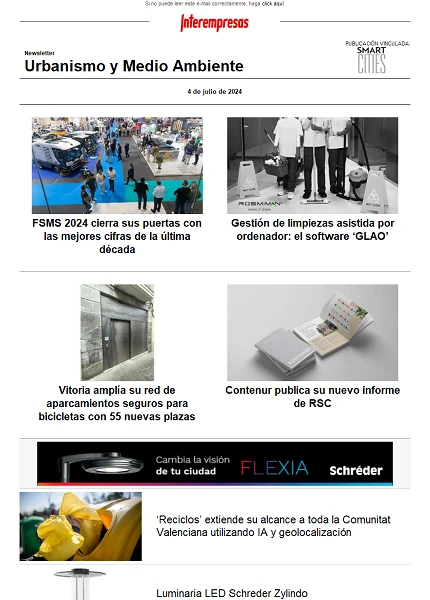"Los árboles pueden contribuir a la mejora del microclima urbano"
Entrevista a Eleuterio Calleja, Técnico-Coordinador del Departamento de Jardinería y Paisajismo del Ifapa, Centro de Palma del Río. Miembro de la Asociación Española de Parques y Jardines Públicos
15 de mayo 2008
Es necesario optimizar el uso de los espacios verdes en la ciudad y resolver, al fin, todos los errores del pasado. Para ello basta con elegir bien las especies a plantar, seleccionar un terreno de calidad y dar a los árboles el espacio suficiente y necesario para crecer y desarrollarse. Eleuterio Calleja, Técnico-Coordinador del Departamento de Jardinería y Paisajismo del Ifapa, el Instituto de Investigación y Formación Agraria y Pesquera de la Junta de Andalucía, habló con Interempresas acerca de los retos a los que se enfrentan las ciudades.
Eleuterio Calleja, Técnico-Coordinador del Departamento de Jardinería y Paisajismo del Ifapa.
¿Qué elementos deben tenerse en cuenta a la hora de diseñar la introducción del árbol en una gran ciudad? ¿Y en una pequeña población?
En general, la característica más importante es la adecuada selección de las especies, atendiendo tanto a criterios de su adaptación al medio, como de su futuro desarrollo en relación con el espacio disponible para su ubicación.
Además, en una gran ciudad habría que elegir las especies en función de su mayor capacidad de depuración atmosférica, así como tender a la creación de corredores verdes, que conecten los diferentes espacios verdes entre sí y estos, a su vez, con el medio rural que las rodea.
En una pequeña población, en cambio, al no tener esos problemas medioambientales y de contaminación, se puede atender más al aspecto ornamental de la especie en cuestión.
¿Cómo ha evolucionado el papel o función de este elemento vivo en el diseño de las ciudades?
Cada vez más, el arbolado urbano necesita ser considerado como una estrategia en la reducción del impacto ambiental en la vida urbana. En este sentido, se están estudiando y proponiendo actualmente especies que sean capaces de absorber los contaminantes pesados atmosféricos y como sumideros del dióxido de carbono, como se está haciendo, por ejemplo, en la Universidad de Sevilla.
¿Cuáles son los errores más habituales que se cometen a la hora de introducir el árbol en el diseño urbano?
El tamaño inadecuado en relación al espacio donde se va a introducir, la mala adecuación del alcorque o espacio donde se va a desarrollar el sistema radicular, así como un mantenimiento deficiente o mal ejecutado.
¿Puede ponernos algún ejemplo de ciudades del mundo donde el elemento en cuestión, el árbol, esté especialmente bien integrado?
Berlín, Londres o Vitoria-Gasteiz.
Explíquenos cómo está integrado el árbol en su ciudad y cuál ha sido su evolución
La integración no ha sido exitosa… y aun se siguen ejecutando plantaciones con muchas deficiencias que hacen que el árbol no pueda desarrollase en plenitud.
A todo esto se le añade la aparición de nuevas plagas y enfermedades de difícil resolución.
¿Cree que el árbol podría ‘aprovecharse’ mejor para contribuir a la reducción de CO2 en el aire? ¿Cómo podrían llevarse a cabo estas mejoras?
Indudablemente, los árboles en las ciudades deberían aprovecharse para que fuesen sumideros de contaminantes atmosféricos y por su contribución a la mejora del microclima urbano. Para ello se deben buscar las especies más idóneas, profundizando en los estudios ya realizados, puesto que solo hay una relación muy limitada de especies.
¿Podría hacer una clasificación de las distintas características del “uso” del árbol en función de la zona geográfica a nivel estatal?
Es evidente que la zona geográfica va a condicionar dicho uso. Así, por ejemplo, en la zona norte, más húmeda, se buscan especies que dejen pasar la luz y tengan copas menos espesas o compactas. También, desde el punto de vista paisajístico, las coníferas se adaptan mejor a esa climatología y a la de la zona centro. En las zonas cálidas del sur y costa mediterránea, en cambio, interesa que los árboles posean una copa mas compacta y proporcionen sombra a las vías públicas. Además, aquí la bondad del clima permite la utilización de algunas especies exóticas, que se caracterizan por la belleza de su floración, como es el caso de las Jacarandas o las Tipuanas, y también de especies que son signo de identidad de algunas ciudades, como los naranjos de Córdoba y Sevilla, o la variedad de palmeras que, aunque mermadas por el ataque del famoso “picudo rojo”, son un referente sobre todo en las ciudades de playa.
¿Cómo valora los criterios que, en general, se siguen en la integración de árboles, parques y jardines en el diseño de las ciudades españolas?
Los criterios de integración de las áreas vedes no son todo lo correcto que deberían ser, porque tendría que haber mayor control en los pliegos de condiciones para la ejecución de obras y que el mantenimiento sea el adecuado, precisándose un aumento sustancial en las partidas económicas destinadas a estas áreas, por parte de las administraciones correspondientes. Además, se debe contar con personal cualificado y preparado desde el punto de vista profesional para que las áreas verdes estén en perfectas condiciones.
¿Cómo sería, para usted, el diseño urbanístico ideal?
El que tenga en cuenta los aspectos paisajísticos y que garantice a la población ciudades más habitables, creándose áreas verdes sostenibles que tengan una gestión y mantenimiento adecuados, buscándose la calidad en las mismas. La sostenibilidad no tiene que ser sinónimo de mayor coste económico sino al contrario, pues lo más caro no es más sostenible. También es indispensable generar nuevos espacios que incrementen la proporción de metros cuadrados de áreas verdes por habitante, para acercarnos a los países centroeuropeos que nos llevan mucha ventaja en estos temas.
Nota: También ha participado en esta entrevista el biólogo Antonio Galván.
